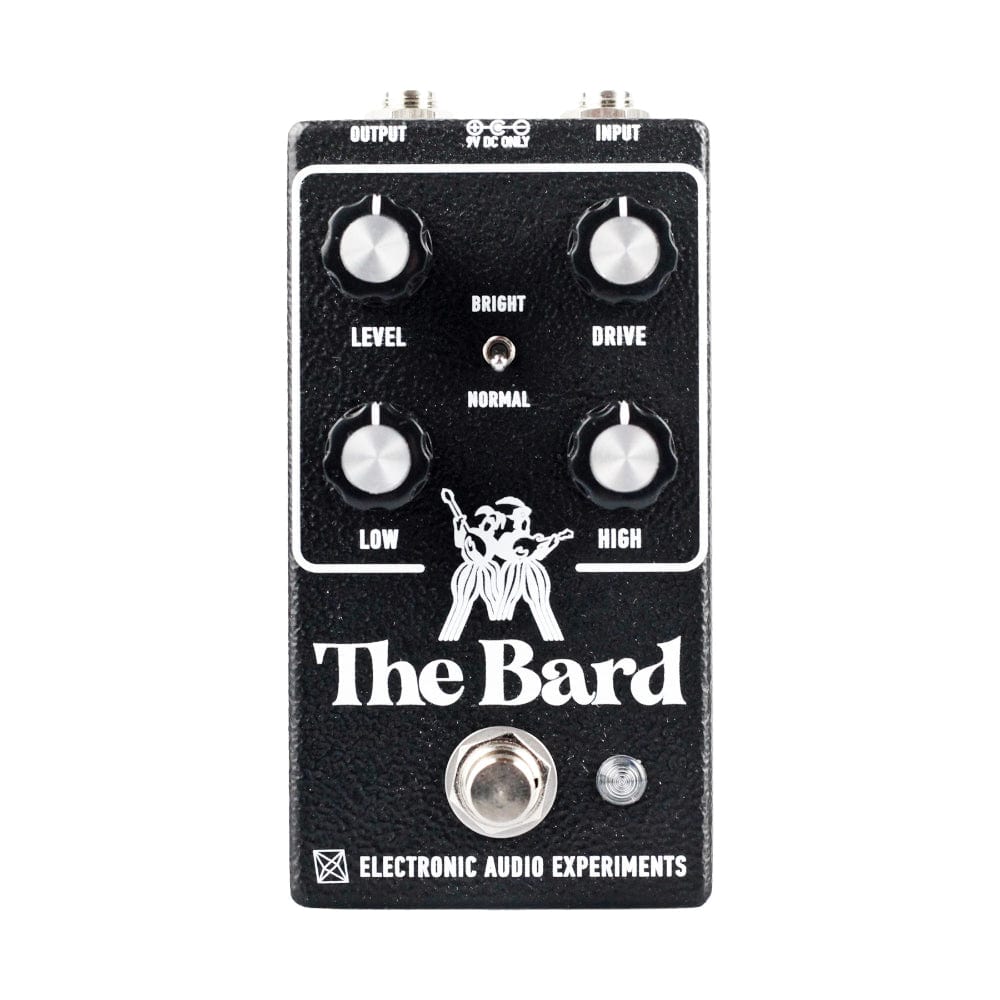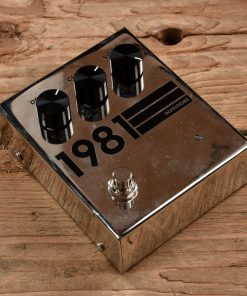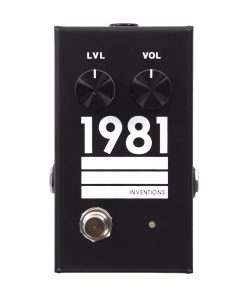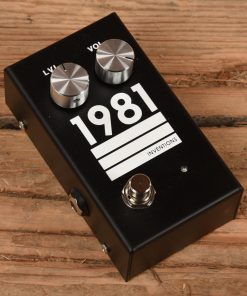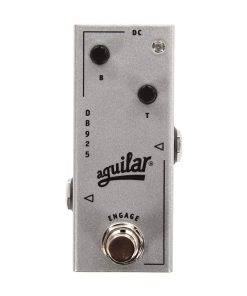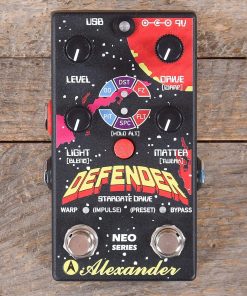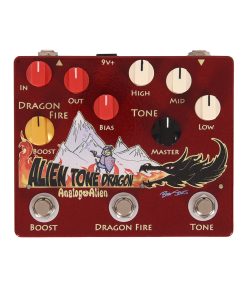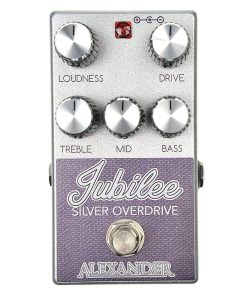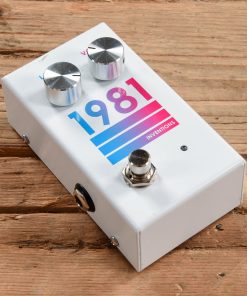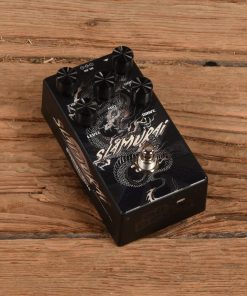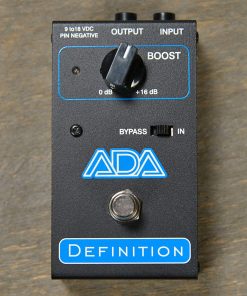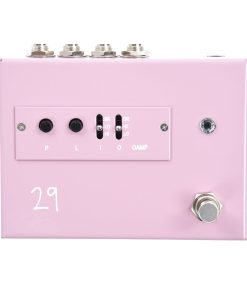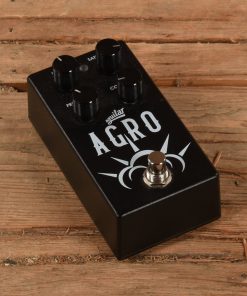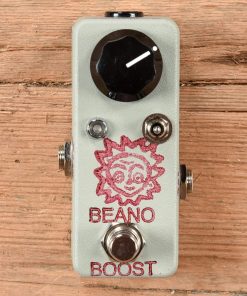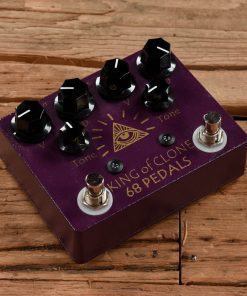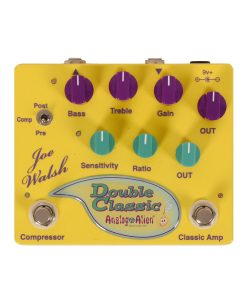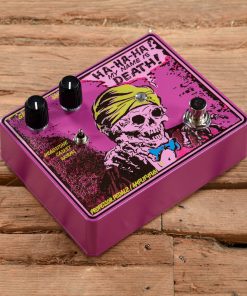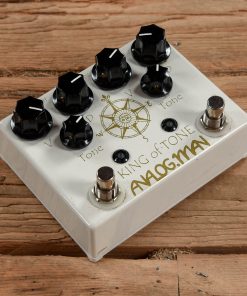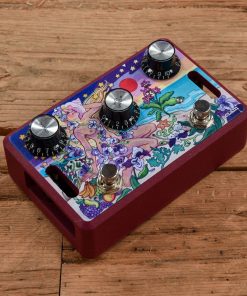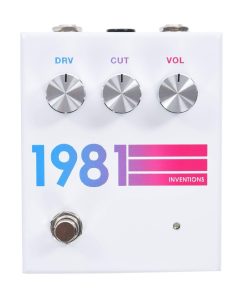Electronic Audio Experiments Special Run The Bard Pedal Electronic Audio Experiments
$ 199,00 $ 79,60
The Bard is an homage to one of our favorite misunderstood amplifiers of the past: the Music Man HD130. Manufactured from 1974 to 1984, these amps combined a solid state preamp with a tube power amp, an unusual choice that lead to them being gravely underrated in their time. But the HD130 and its siblings are some of our favorite amps thanks to their pristine (but not quite vintage) clean tones, trashy overdrive, and very wide frequency response that suits both guitar and bass. We editorialized our favorite parts of it into a compact overdrive pedal: The Bard.
The Bard’s circuitry resembles a classic 1960s American amplifier reimagined with op amps in the place of tubes. The clean tones are clear and sparkly, with a gentle dip in the midrange thanks to the passive tone stack. Increasing Drive delivers medium gain sounds with a glassy edge, especially when the Bright switch is active. At the highest Drive settings, the op amps distort in a way that is unapologetically not “tube-like”—a hallmark of the original amps. The tone stack is located before the primary gain stage and can emphasize specific textures within the overdriven sound. The Bard is a versatile performer that will effortlessly traverse between traditional and angular stylings.
Controls:
- Level: Output level. Handy as a boost!
-
Drive: Increases the gain, from clean to touch sensitive to heavily overdriven. The taper of the control
is highly influenced by the EQ settings and the position of the Bright/Normal switch. -
Low: passive bass control, with about 15dB of range below 300Hz. Higher settings will make the drive
more fuzzy. -
High: passive treble control, approximately 15dB of range between 1kHz-4kHz. Higher settings will
increase gain for high frequencies, sharpening the drive sound. -
Bright/Normal Switch: Changes the treble contouring of the Drive control. At low drive settings, adds
a glassy character. As drive is increased, the switch is more subtle. At maximum drive, the switch makes no discernible difference in the sound.
125B enclosure (121mm x 66mm footprint) - True bypass with relay switching
- Power: 9VDC center negaGve @ 60mA
- 200kΩ input impedance @ 1kHz
- >5kΩ output impedance @ 1kHz
Fast Shipping with Professional Packaging
We offer a wide range of shipping options due to our long-standing partnerships with UPS, FedEx and DHL. Our warehouse staff are trained to pack your goods exactly according to the specifications we offer. Before shipping the goods are thoroughly examined and secured. Every day, we send thousands of packages to clients from all over the world. Our determination to be the biggest online retailer in the world is shown by this. The warehouses are located in Europe as much as they are in USA.
Note: Orders with more than one product will be assigned a distinct processing time, dependent on the particular item.
Before shipping, we will examine the items ordered thoroughly before sending the items. The majority of orders are shipped within 48 hrs. The delivery estimate is between 3-7 days.
Returns
The stock is constantly changing and cannot be fully controlled by us because of the involvement of several parties including the factory and our warehouse. Stock levels can fluctuate at any given time. Please be aware that it is possible that your order could become unavailable even after you've placed your order.
Our policy is valid for a period of 30 days. If 30 days have passed by since your purchase however, we're unable to give an exchange or refund.
In order to be eligible for a refund your product must be unopened and in the same state as you received it. It should also be in the original package.
Related products
Effects and Pedals / Overdrive and Boost
Effects and Pedals / Overdrive and Boost
Effects and Pedals / Overdrive and Boost
Abominable Electronics Oppressive Cult Destroyer Abominable Electronics
Effects and Pedals / Overdrive and Boost
Effects and Pedals / Overdrive and Boost
Effects and Pedals / Overdrive and Boost
Effects and Pedals / Overdrive and Boost
Effects and Pedals / Overdrive and Boost
Effects and Pedals / Overdrive and Boost
Effects and Pedals / Overdrive and Boost
Alexander Pedals Jubilee Silver Overdrive Pedal Alexander Pedals
Effects and Pedals / Overdrive and Boost
Effects and Pedals / Overdrive and Boost
Analog Alien Alien Tone Dragon Overdrive/Boost Pedal Analog Alien
Effects and Pedals / Overdrive and Boost
Effects and Pedals / Overdrive and Boost
Effects and Pedals / Overdrive and Boost
Effects and Pedals / Overdrive and Boost
Effects and Pedals / Overdrive and Boost
Analog Alien Rumble Seat Overdrive/Delay/Reverb Pedal Analog Alien
Effects and Pedals / Overdrive and Boost
Effects and Pedals / Overdrive and Boost
Effects and Pedals / Overdrive and Boost
Effects and Pedals / Overdrive and Boost
Effects and Pedals / Overdrive and Boost
Effects and Pedals / Overdrive and Boost
Effects and Pedals / Overdrive and Boost
Effects and Pedals / Overdrive and Boost
Effects and Pedals / Overdrive and Boost
Analog Alien Joe Walsh Double Classic Overdrive Pedal Analog Alien
Effects and Pedals / Overdrive and Boost
Analogman King of Tone V4 with Both Side High Gain Option Analogman
Effects and Pedals / Overdrive and Boost
Effects and Pedals / Overdrive and Boost
Effects and Pedals / Overdrive and Boost
Effects and Pedals / Overdrive and Boost
Effects and Pedals / Overdrive and Boost
1981 Inventions DRV Overdrive White Hyperfade 1981 Inventions
